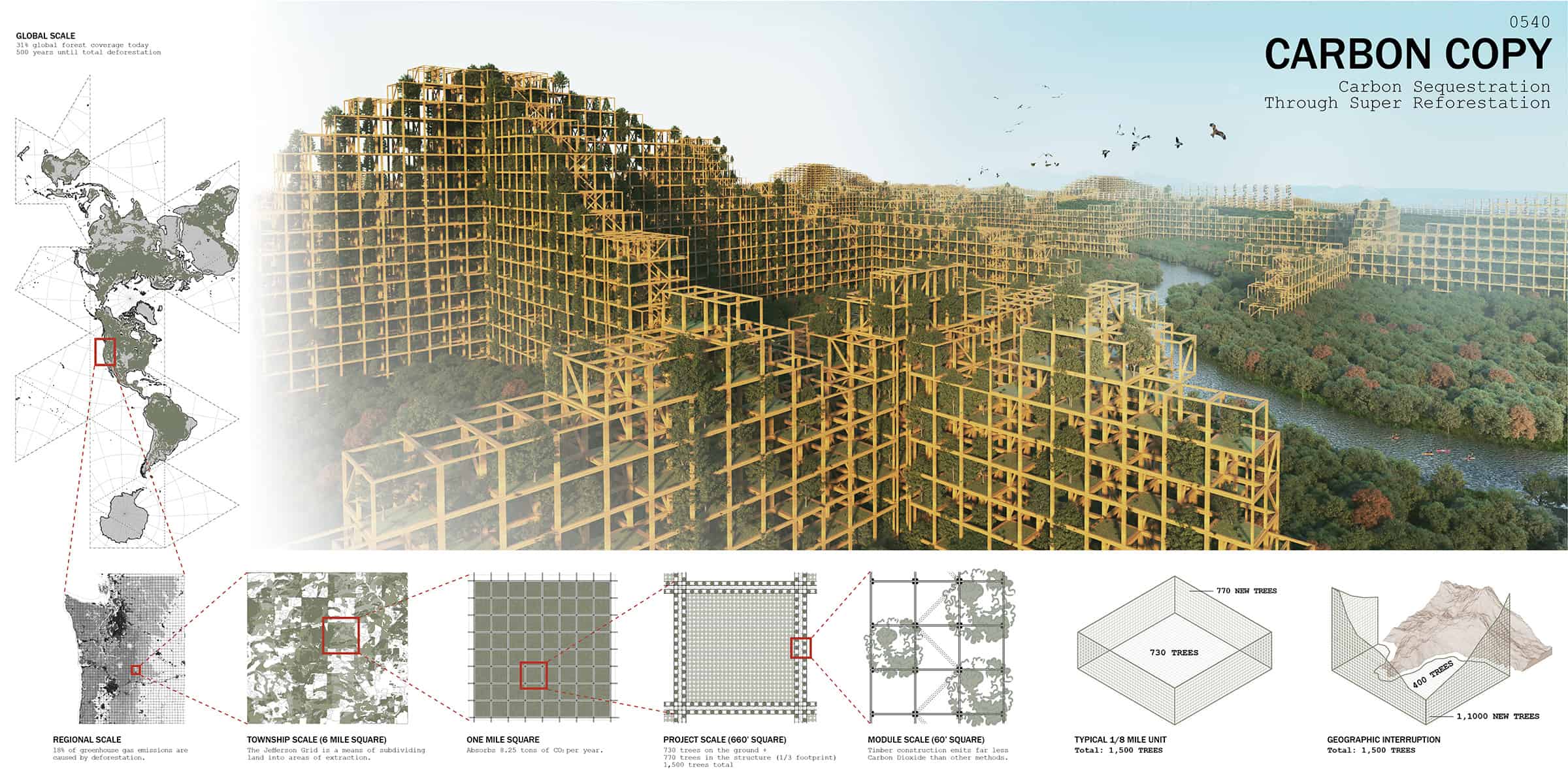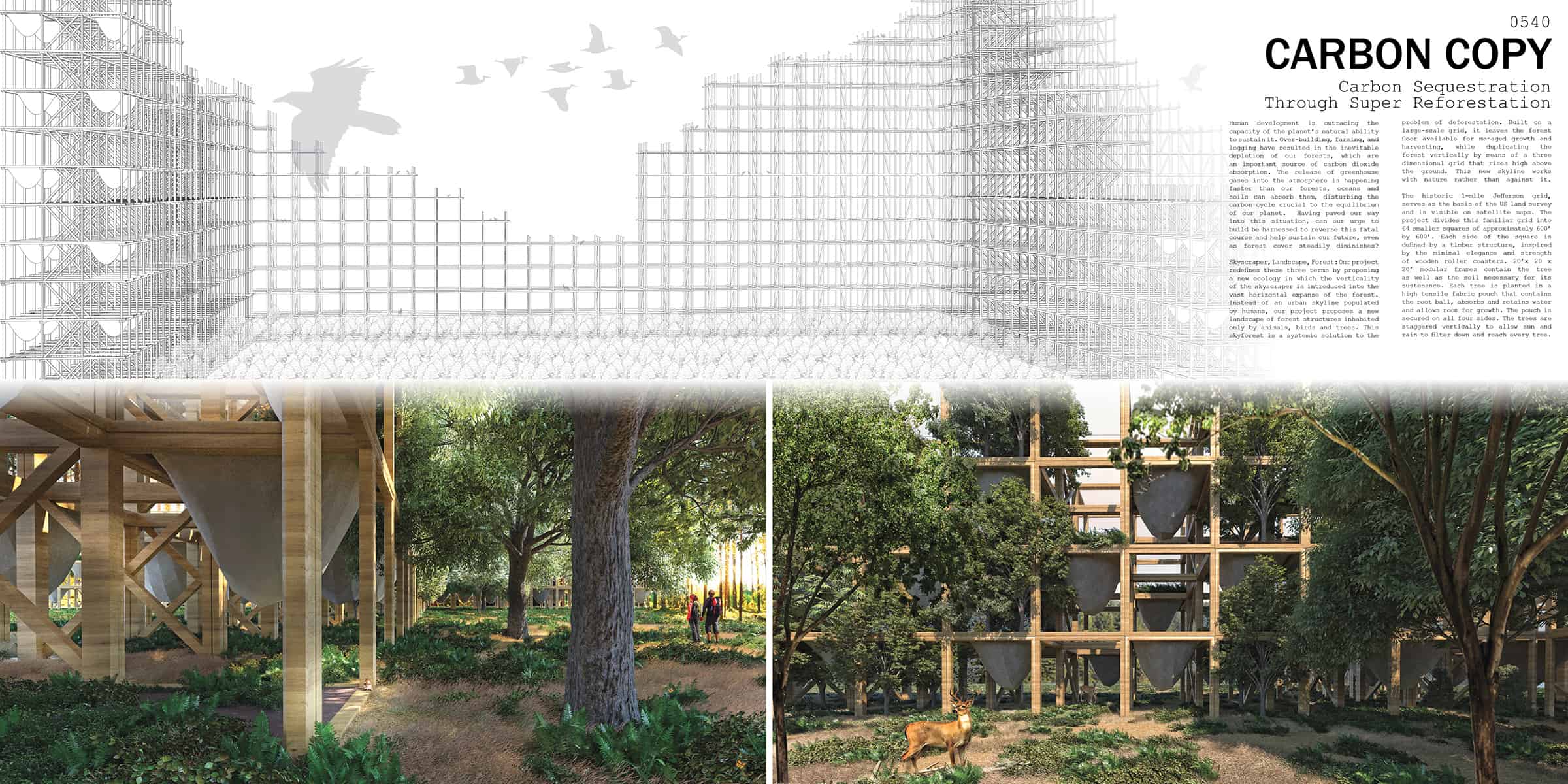Honorable Mention
2019 Skyscraper Competition
Dattner Architects
United States

Carbon Sequestration Through Super Reforestation
Human development is outracing the capacity of the planet’s natural ability to sustain it. Over-building, farming, and logging have resulted in the inevitable depletion of our forests, which are an important source of carbon dioxide absorption. The release of greenhouse gases into the atmosphere is happening faster than our forests, oceans and soils can absorb them, disturbing the carbon cycle crucial to the equilibrium of our planet. Having paved our way into this situation, can our urge to build be harnessed to reverse this fatal course and help sustain our future, even as forest cover steadily diminishes?
Skyscraper, Landscape, Forest: Our project redefines these three terms by proposing a new ecology in which the verticality of the skyscraper is introduced into the vast horizontal expanse of the forest. Instead of an urban skyline populated by humans, our project proposes a new landscape of forest structures inhabited only by animals, birds and trees. This skyforest is a systemic solution to the problem of deforestation. Built on a large-scale grid, it leaves the forest floor available for managed growth and harvesting, while duplicating the forest vertically by means of a three dimensional grid that rises high above the ground. This new skyline works with nature rather than against it.
The historic 1-mile Jefferson grid, serves as the basis of the US land survey and is visible on satellite maps. The project divides this familiar grid into 64 smaller squares of approximately 600’ by 600’. Each side of the square is defined by a timber structure, inspired by the minimal elegance and strength of wooden roller coasters. 20’x 20x 20’ modular frames contain the tree as well as the soil necessary for its sustenance. Each tree is planted in a high tensile fabric pouch that contains the root ball, absorbs and retains water and allows room for growth. The pouch is secured on all four sides. The trees are staggered vertically to allow sun and rain to filter down and reach every tree.
The project responds to natural obstacles and topography like mountains, valleys and rivers. Wherever one of these obstructions interrupts the grid, the structure compensates for loss of tree modules by increasing in height. The result is a constantly undulating profile that dips and soars depending on what is happening below. Although the structure looks massive from the air, at the forest floor it remains very open to animal migration, bird flight, even vehicular and human passage.
The trees will be planted as saplings, mixing species to encourage biodiversity as a means of resisting disease and blight. As the tree grows, falling seeds and leaves will take root in the suspended soil, creating mini-forest floors that eventually populate, intertwine and cover the entire structure. Both the trees and the timber construction sequester carbon dioxide that would otherwise remain in the atmosphere. Eventually, lighting strikes and natural decay will destroy the structures which will then return to earth. At that point, a new structure will be built in its place, the high strength tensile fabric growing pouches will be reused, and the cycle will begin over again.
Without human intervention, nature finds its own equilibrium. We may already be past that point in our time on this planet. While deforestation is inevitable on a regional scale, our project can slow or mitigate this development on a larger, global scale by replacing cleared land in one country with a new, denser and taller skyforest. The new growth will increase the planet’s capacity to sequester harmful greenhouse gases, and play its part in restoring balance to the earth.


This work is licensed under a Creative Commons License permitting non-commercial sharing with attribution. https://creativecommons.org/licenses/by-nc-nd/4.0/



